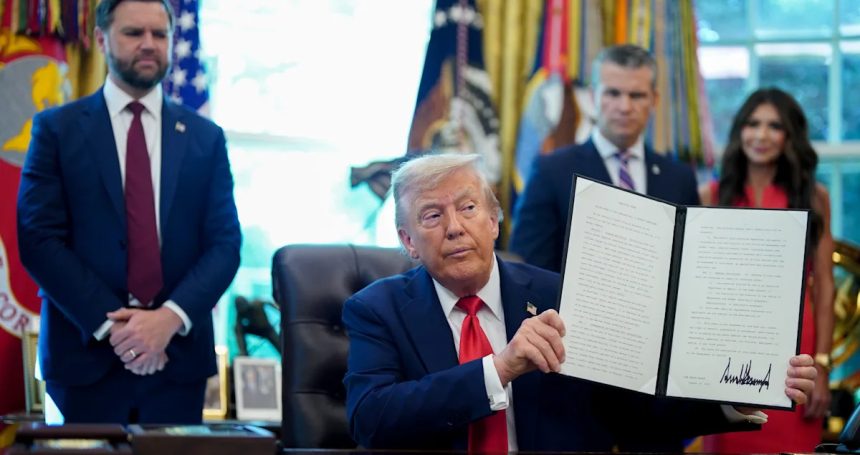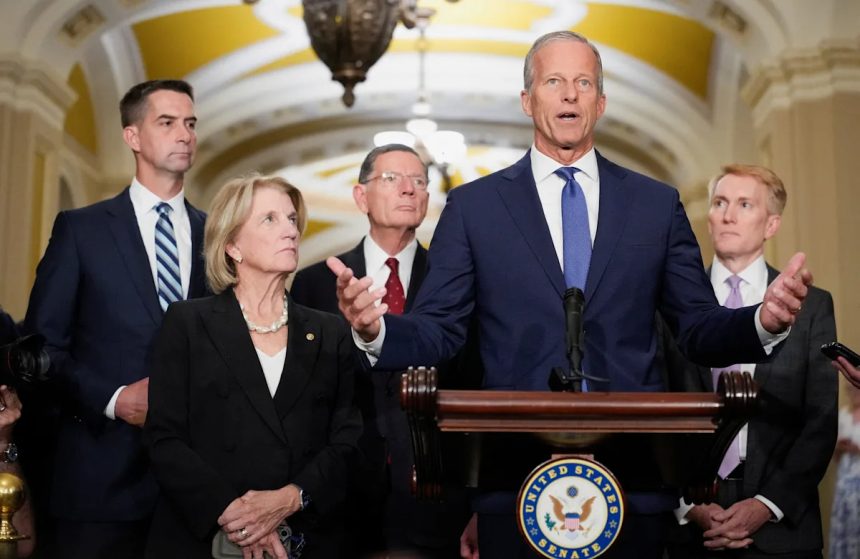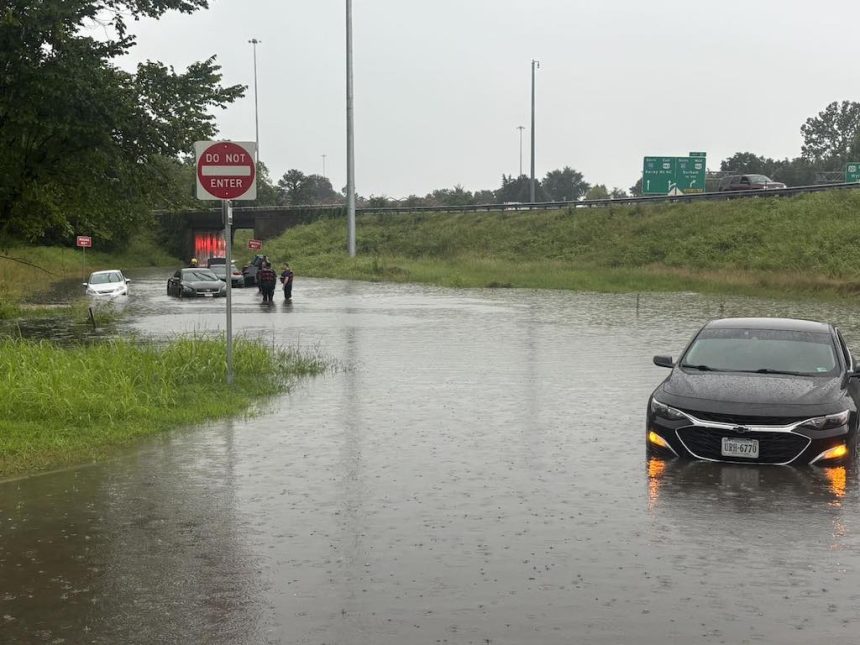President Trump on Monday signed a pair of executive orders seeking to eliminate cashless bail in the United States.
One order directs his administration to identify federal funding that could be taken away from states and cities that refuse to give up cashless bail. The other order specifically moves to end the policy in Washington, D.C., as part of Trump’s ongoing takeover of law enforcement in the nation’s capital.
During a signing ceremony in the Oval Office on Monday, Trump blamed cashless bail for rising crime while inaccurately describing how the policy works.
“Somebody kills somebody. They go out. ‘Don’t worry about it, no cash, come back in a couple of months, we’ll give you a trial.’ You never see the person again. And they kill people, and then they get out,” he said. “Cashless bail — we’re ending it.”
Trump’s claims that crime is on the rise run counter to official statistics that suggest crime — in D.C. and nationwide — has declined significantly in recent years.
How cashless bail works
Traditional bail serves as a form of collateral to convince people charged with crimes to show up to their future court dates while their case is adjudicated. The accused must pay money up front for the right to be released before their trial and can get the money back if they return to court on the appropriate dates. If they don’t come back, they forfeit the money. Anyone who can’t afford to pay their bail must stay in custody.
Cashless bail policies require judges to set bail amounts at $0 for certain offenses, including misdemeanors and nonviolent felonies, allowing suspects to be released without having to give up any money up front. That doesn’t mean that everyone gets to go free, as Trump claims. The details vary between states and cities, but violent crimes like murder or assault are often exempted from cashless bail policies. Judges also usually have the power to order that someone be kept in custody if they’re considered to be a danger to the community.
Activists have argued for decades that the traditional bail system punishes the poor, since they end up being forced to remain locked up while others who can afford to cover their bail go free. Roughly 60% of defendants, who have not yet been convicted of a crime, are detained for some period of time before their trials because of their inability to pay bail, according to a federal government study released in 2022. That same study found that the number of people being held in pretrial detention went up by 443% between 1970 and 2015, largely because of cash bail.
Other researchers have found consistent inequities in the cash bail system. Men tend to be ordered to pay significantly higher bail amounts than women. Black and Latino defendants are frequently required to pay more than white defendants. Even a brief amount of time in pre-trial detention can cause people to lose their jobs, make them unable to pay their rent, and even make them more likely to be arrested before their trial starts.
What is the impact of cashless bail?
“Every place in the country where you have no cash bail is a disaster,” Trump said earlier this month, but that claim is not backed up by available data.
Isolating the specific impact of cashless bail can be challenging, given the many other factors that influence crime rates and the fact that most of the country still uses the traditional bail system. In general, though, researchers have not found any correlation between cashless bail and a rise in crime.
Washington, D.C., was one of the first places in the U.S. to switch to cashless bail in the 1990s. Crime rates in the nation’s capital have dropped dramatically since then, consistent with nationwide trends that have seen violent crime rates cut by more than half over the past three decades. More recent changes in Illinois, New York and New Jersey have yielded similar results.
To make its case against cashless bail, the Trump administration pointed to the results of a study in Yolo County, Calif., which installed an emergency “zero bail” policy in the early stages of the COVID-19 pandemic. Defendants who were released under that policy were twice as likely to be rearrested on felony charges and three times as likely to be charged with a violent crime, the study found. However, Yolo County District Attorney Jeff Reisig, who commissioned the study, told CBS News earlier this year that the results should not be used to judge the effectiveness of cashless bail as a whole because it was so unique — both in its scope and its implementation — because of the specific circumstances of the pandemic.
Can Trump end cashless bail?
The president has far more authority over what happens in Washington, D.C., than he does in the rest of the country. In general, he cannot rewrite state or local bail laws through executive order. Some Republicans in Congress have said they will push for legislation to eliminate cashless bail nationwide, but there’s debate over whether they even have the power to force states to change their laws on this issue.
“Congress has no general authority to dictate how states set their bail laws,” Lisel Petis, policy director at the think tank R Street, wrote earlier this month. “Bail policy falls under a state’s police powers.”
What Trump and the congressional GOP can do is threaten to withhold billions in federal funding from states and cities that defy his call to ditch cashless bail. Whether that will be enough to convince them to change their policies remains to be seen.













